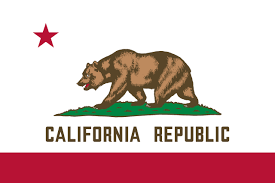CVC 22100: Turning and Stopping and Turning Signals.
California Vehicle Code (CVC) Section 22100 outlines the basic rules and requirements for making turns at intersections and other roadway locations in California. These rules are designed to ensure safe and orderly traffic flow. Here's an explanation of CVC 22100:
CVC 22100 - Turning and Stopping and Turning Signals:
-
Right Turns (Subsection (a)):
- Subsection (a) of CVC 22100 states that a driver intending to turn right at an intersection or into a private road or driveway must approach the turn and make the right turn as close as practical to the right-hand curb or edge of the roadway. In other words, drivers should keep to the right side of the road when making right turns.
-
Left Turns (Subsection (b)):
- Subsection (b) specifies that a driver intending to turn left at an intersection must approach the turn in the extreme left-hand lane or in a lane designated for left turns.
-
Turning Left from a Two-Way Street (Subsection (c)):
- Subsection (c) notes that when turning left from a two-way street onto another two-way street, drivers should begin the turn from the lane closest to the centerline of the roadway. This means that if you're turning left at an intersection with multiple lanes, you should start the turn from the leftmost lane.
-
Turning Left from a One-Way Street (Subsection (d)):
- Subsection (d) specifies that when turning left from a one-way street onto another one-way street, drivers should make the turn from the left-hand lane nearest to the left-hand edge of the roadway.
-
Signal Requirements (Subsection (e)):
- Subsection (e) outlines the requirements for using turn signals. It states that a driver must signal their intention to turn right or left continuously during the last 100 feet traveled before making the turn. However, if the speed limit is greater than 35 mph, the signal must be given for at least the last 300 feet before the turn.
-
Stopping Before Making a Turn (Subsection (f)):
- Subsection (f) requires drivers to come to a complete stop before making a right or left turn at a red traffic signal or stop sign. Drivers should yield the right-of-way to any other vehicles and pedestrians in or approaching the intersection.
-
Turning Left on Red (Subsection (g)):
- Subsection (g) allows drivers to make a left turn at a red traffic signal from a one-way street onto another one-way street unless posted signs indicate otherwise.
-
U-Turns (Subsection (h)):
- Subsection (h) states that U-turns are generally allowed in California unless posted signs prohibit them. However, U-turns are prohibited in certain situations, such as when it is unsafe or when visibility is limited.
-
Penalties for Violation (Subsection (i)):
- Violating CVC 22100 by failing to follow the rules and requirements for turning at intersections can result in traffic citations, fines, and potential points on your driver's license, depending on the extent of the violation.

DontPayTickets.com
Fight Back California Traffic Violations and Tickets

